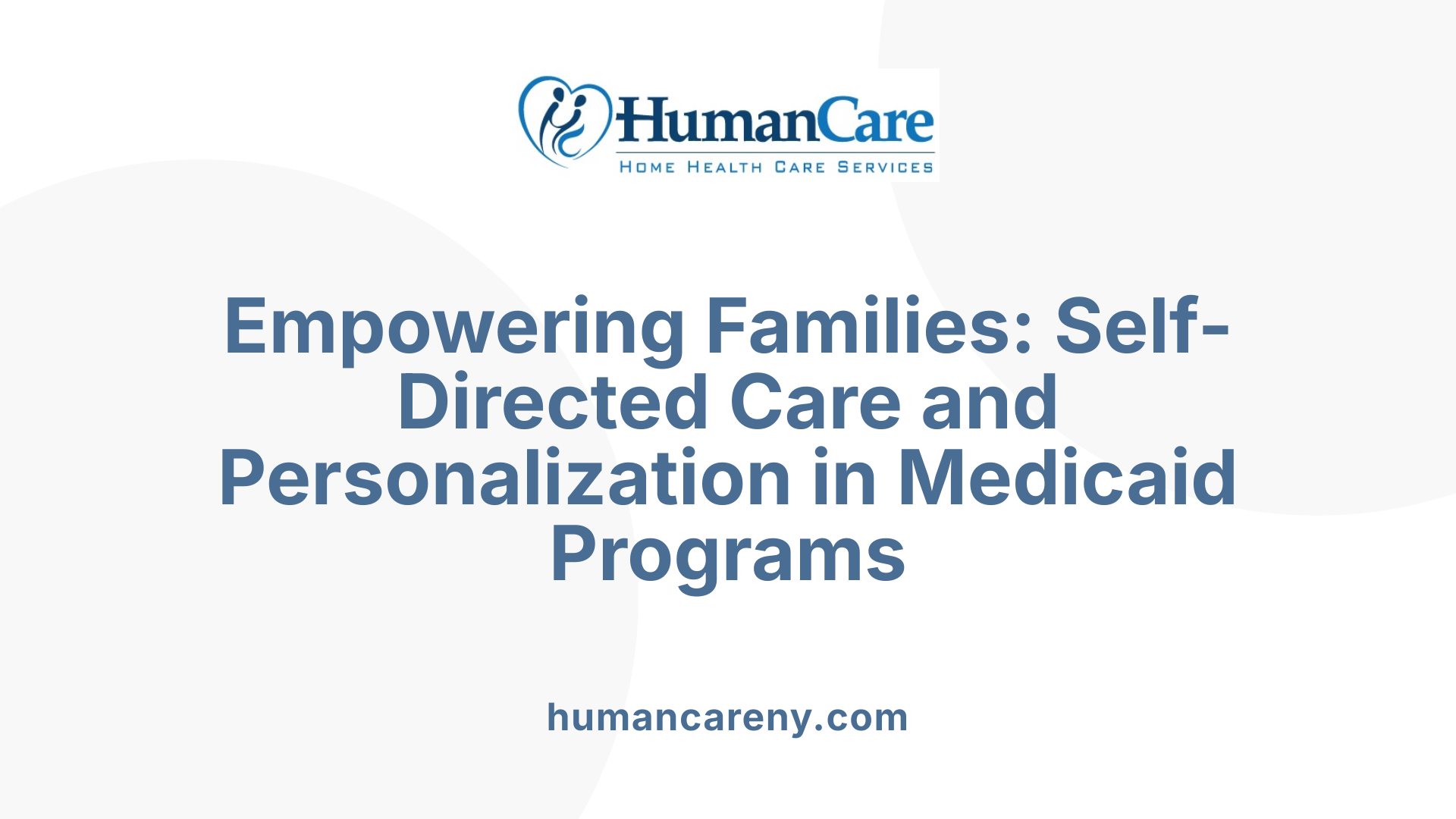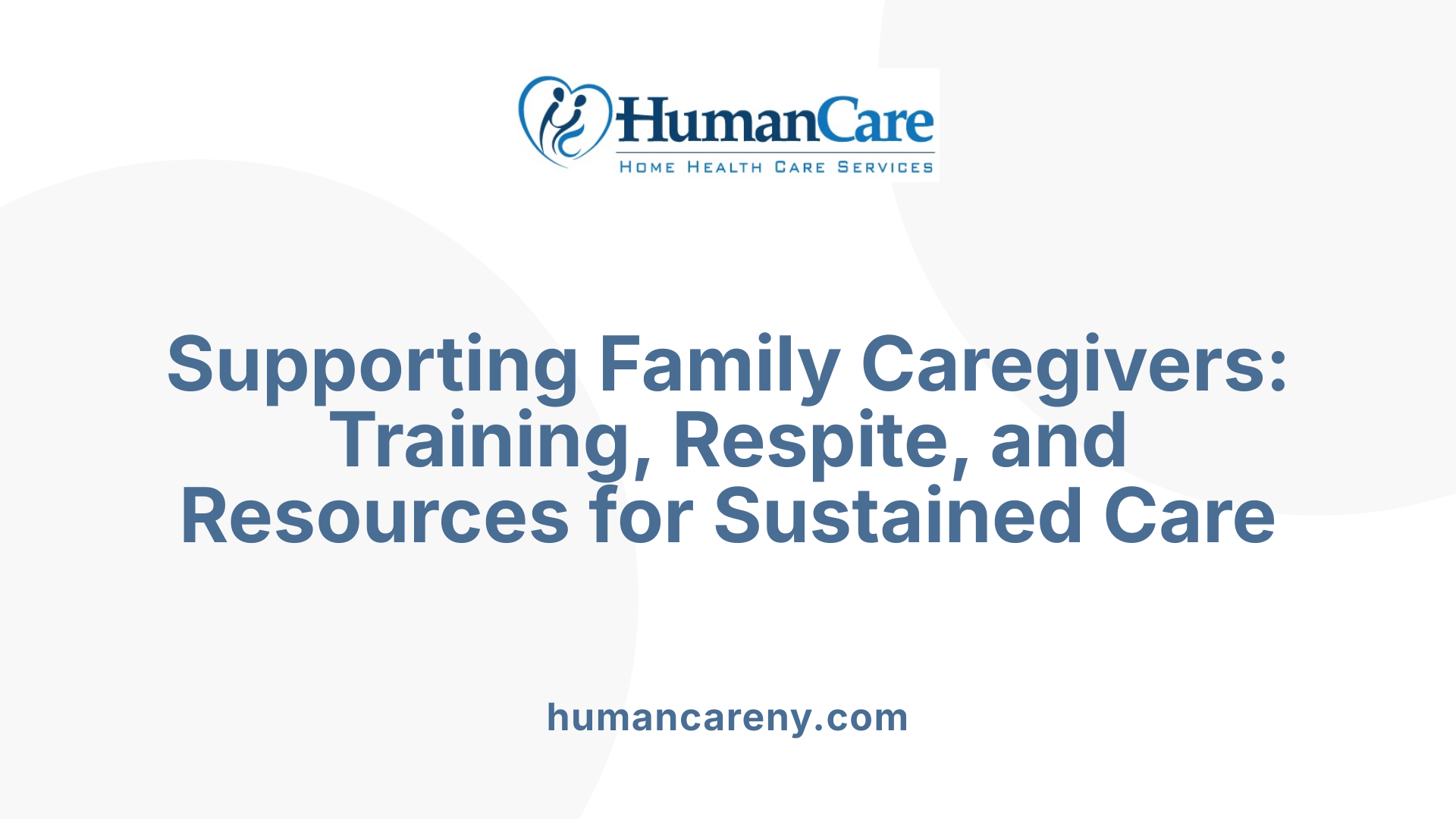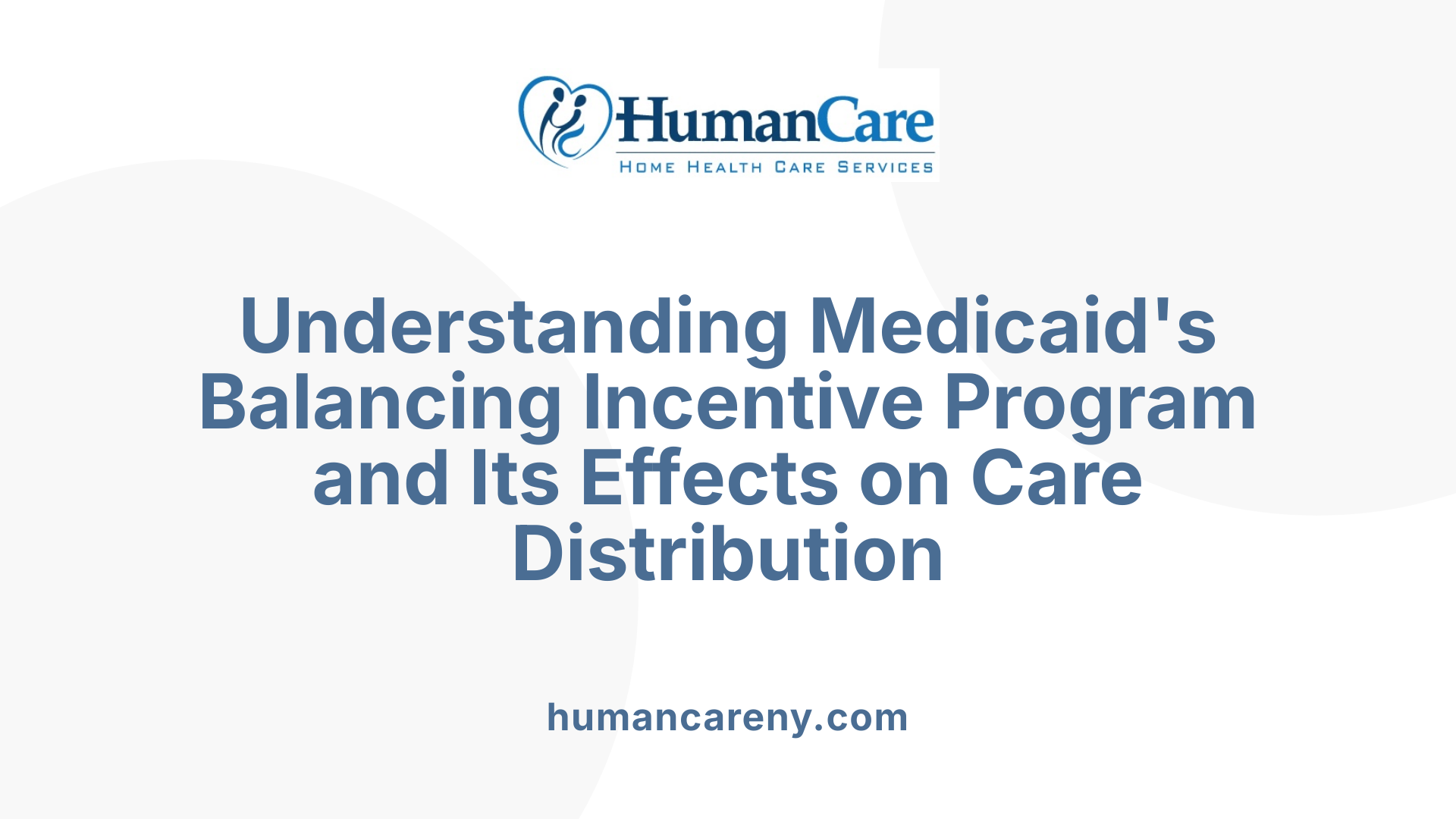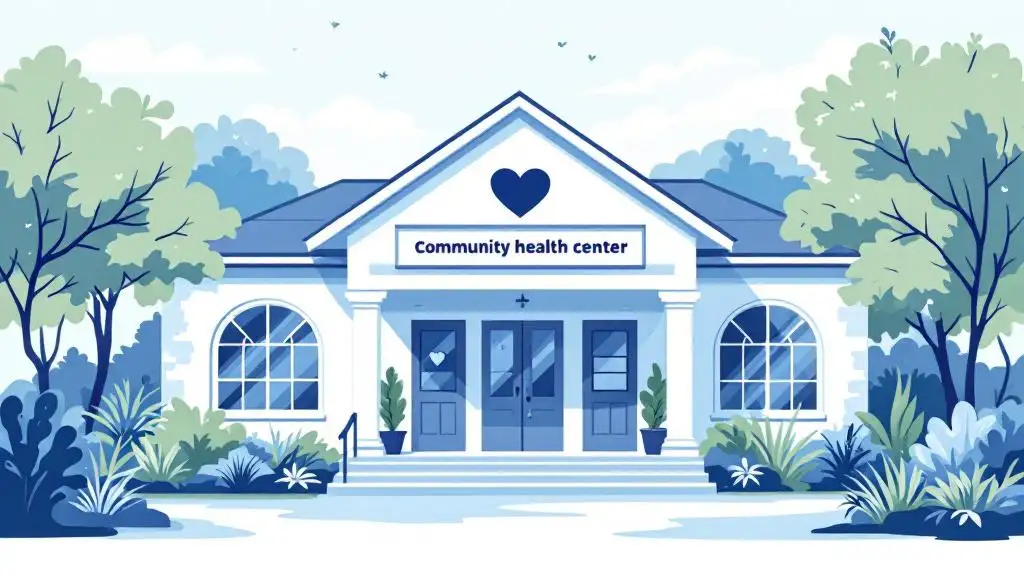The impact of Medicaid waiver programs on family caregivers
Supporting Families at Home: The Role of Medicaid Waiver Programs

Understanding Medicaid Waivers and Family Caregiving
Medicaid waiver programs play a pivotal role in shaping the landscape of long-term care in the United States, especially through their influence on family caregivers. These programs facilitate access to home and community-based services, allowing families to provide care within their homes and communities rather than institutional settings. As Medicaid paid for roughly two-thirds of home care spending in 2022, understanding how these waivers impact family caregivers is essential for policymakers, healthcare providers, and families alike.
The Scope of Medicaid Home Care and Its Financial Support for Caregivers
What impact do Medicaid waiver programs have on family caregivers?
Medicaid waiver programs play a crucial role in shaping the landscape of family caregiving. These programs provide vital resources such as caregiver training, respite care, and support groups that help ease the burden on family members. Importantly, most waiver programs allow family caregivers to receive payments for their services, especially when caring for individuals with intellectual or developmental disabilities. This not only offers financial assistance but also formally recognizes the caregiver's contribution.
Self-direction is a central feature of these programs, giving families more control over the types of care and providers involved. Families can select, train, and dismiss caregivers, thus tailoring care to the specific needs of their loved ones. However, recent studies, such as the analysis from the Balancing Incentive Program (BIP), show that these initiatives can influence caregiving patterns.
The BIP, for instance, was linked to an increase in hours of professional care and a decrease in hours of care provided by non-spouse family members. Despite these shifts, total hours of care tended to remain stable, suggesting a redistribution rather than a reduction in overall support.
Overall, Medicaid waiver programs serve as a powerful tool to support family caregivers, offering both tangible resources and a platform to customize care. They help balance the demands on families, promote the use of professional services when appropriate, and can alleviate some of the physical and emotional burdens associated with caregiving.
Empowerment Through Self-Direction and Flexibility

What impact do Medicaid waiver programs have on family caregivers?
Medicaid waiver programs play a significant role in shaping how family caregivers provide care. These programs often include services like training, respite care, and support groups, which help lessen the physical and emotional burden often faced by family members. Many waivers also give families the ability to self-direct their home care services, allowing them to choose, train, and even dismiss their caregivers based on individual needs.
A notable aspect of these programs is the option to pay family members for caregiving services. This not only provides financial recognition for their efforts but also offers them more control over the care process. Specifically, waivers for individuals with intellectual or developmental disabilities frequently include allowances for family payments.
Research on programs like the Balancing Incentive Program shows that when policies favor professional care, hours provided by non-spouse family members tend to decrease, shifting some caregiving responsibility from family to professional caregivers. Despite this, overall hours of care usually stay stable, suggesting that professional services and family care can substitute for each other.
In summary, Medicaid waiver initiatives support and influence family caregiving by enabling self-direction and offering resources that validate and ease the caregiving role. These programs can lead to a balanced distribution of responsibilities, ultimately benefiting both caregivers and care recipients.
Self-directed care services
Self-directed care allows families to make important decisions about their loved ones' caregiving and manage services directly. This approach grants families autonomy to select their preferred providers and customize the care plan, facilitating more personalized and flexible support.
Provider choice and training
Families participating in Medicaid-supported self-direction can choose their caregivers, including training them as needed. The ability to train and dismiss caregivers empowers families to maintain high standards of care and adapt quickly to changing needs.
| Aspect | Description | Additional Details |
|---|---|---|
| Self-direction | Families control care arrangements | Includes choosing, training, and dismissing providers |
| Provider choice | Families select caregivers, including family members | Training and support are often provided |
| Impact on caregiving roles | Can reduce burden or shift responsibilities | Policy influences which family members are involved |
Understanding and supporting these flexible, family-centered approaches can improve the quality of long-term care and recognize the vital contributions of caregivers in the Medicaid system.
Support Systems for Family Caregivers: Training, Respite, and Beyond

What role do Medicaid waivers play in supporting family caregivers?
Medicaid waivers are vital in providing targeted support for family caregivers. They allow states to customize and expand services that assist caregivers in their roles. Through these waivers, states can include provisions for caregiver training to improve skills and confidence.
Respite care services, a key component within many waivers, give family caregivers temporary relief from their responsibilities, helping to prevent burnout and maintain their own health.
Furthermore, Medicaid waivers often support self-direction initiatives, enabling enrollees to choose, train, and pay family members as their caregivers. This flexibility helps tailor care to individual needs and fosters family participation.
Beyond direct payments, Medicaid-funded programs also offer additional resources such as behavioral health services, counseling, and support groups, all aimed at strengthening caregiver resilience.
Overall, these waivers serve as an essential tool in recognizing and bolstering the crucial role of family caregivers, ensuring they receive the necessary support to sustain long-term care at home.
The Influence of Policy Tools Like the Balancing Incentive Program
 Medicaid’s Balancing Incentive Program (BIP) is designed to encourage states to shift long-term care from institutional settings to community-based services. Recent research analyzing data from the Health and Retirement Study between 2008 and 2016 reveals notable effects of BIP on caregiving dynamics.
Medicaid’s Balancing Incentive Program (BIP) is designed to encourage states to shift long-term care from institutional settings to community-based services. Recent research analyzing data from the Health and Retirement Study between 2008 and 2016 reveals notable effects of BIP on caregiving dynamics.
Initially, the program was associated with an increase in professional care hours, specifically about 18 additional hours per month for older adults with functional limitations. This suggests that BIP funding and policy incentives may encourage greater use of formal, professional caregiving services.
Interestingly, BIP exposure also resulted in a decrease of approximately 46 hours per month in family care hours from non-spouse relatives. Despite this reduction, the overall hours of care—combining both professional and family provided—did not show significant change. This indicates a shift rather than a reduction in total care received.
The analysis also highlights that care hours from spouses remained stable regardless of BIP exposure, suggesting that spouse caregiving is less affected by policy shifts aimed at care rebalancing.
These findings imply that Medicaid’s rebalancing initiatives can influence how families distribute caregiving responsibilities, often supplementing care with professional services while reducing reliance on certain family members, particularly non-spouse kin.
The impact varies depending on the relationship, underscoring that policies can flexibly shape caregiving roles across different family structures. This shift may alleviate some burden from non-spouse caregivers, providing a more sustainable balance of care.
Research indicates that Medicaid waivers and programs like BIP not only expand access to supportive services but also promote more diverse and community-oriented care arrangements. These insights are vital for policymakers aiming to strengthen support for family caregivers while ensuring comprehensive care for aging and disabled populations.
Regional Variations in Medicaid Waiver Impact

Are there variations in the impact of Medicaid waiver programs across different regions?
Yes, the influence of Medicaid waiver programs differs significantly across regions, mainly due to differences in how these programs are designed, funded, and implemented.
Some states offer more comprehensive and generous waiver options, which can lead to better access to services and help close gaps in care, especially for minority populations. For instance, states with more substantial Medicaid Home and Community-based Services (HCBS) waivers have been more successful in reducing unmet healthcare needs among minority children with autism spectrum disorder, with notable improvements for Black children.
However, disparities are still present in other areas. Enrollment processes and wait times can vary widely. States like North Carolina, for example, have faced challenges with lengthy delays and limited capacity within their waiver programs, which restricts access for those in need.
State policies also play a role. Factors such as Medicaid expansion, outreach efforts, and specific waiver criteria influence how well these programs serve their populations. Some states actively work to reduce barriers and expand access, while others struggle with resource limitations.
In summary, while Medicaid waivers have the potential to enhance care and reduce disparities, their effectiveness is heavily influenced by regional commitments, policies, and program structures. Consequently, regional differences persist, shaping the experiences of Medicaid enrollees across the country.
| Aspect | Variations Observed | Effect on Access and Disparities | Examples |
|---|---|---|---|
| Program Design | Varies from comprehensive to limited waivers | Impacts availability and scope of services | North Carolina's delays vs. states with proactive outreach |
| Resources and Funding | Differences in funding levels and capacity | Affect wait times and enrollee experiences | States with more funding can serve more beneficiaries |
| Implementation Strategies | Different outreach and enrollment strategies | Influence how well diverse populations are reached | Outreach to minority communities, culturally tailored programs |
The Broader Implications for Families and Policy
What are the broader implications of Medicaid waiver programs for families involved in caregiving?
Medicaid waiver programs significantly impact families by formally recognizing and supporting their caregiving roles. These programs allow family members to be more involved in planning and delivering care, often through self-directed services where family caregivers can receive wages or benefits.
Families benefit from increased autonomy and access to supports like respite care, training, and behavioral health services. These resources can lessen the physical and emotional toll of caregiving, helping prevent burnout and elevate overall well-being.
Moreover, by integrating family caregivers into official care networks, programs foster stronger support systems. This can improve the quality of care recipients' lives, helping them stay in their homes longer and avoid institutional care, which can be costly.
States have tailored these waiver programs in various ways, which can influence how family caregivers are involved across different regions. Some states enable family members to obtain direct payments or to perform skilled tasks under scope-of-practice adjustments.
Overall, Medicaid waivers promote more personalized, community-based care, acknowledging family caregivers as vital partners. These policies reflect a shift toward sustainable support systems that balance professional services with family-provided care.
Policy adjustments and innovations
States like Colorado, Florida, Georgia, and Tennessee are leading in developing innovative programs that enhance support for family caregivers. These include waiving scope of practice laws, offering behavioral health services, and establishing tailored training programs.
Policy changes at the federal level are also encouraged to disseminate these successes broadly. Actions such as supporting existing innovations, creating incentives for states to implement new strategies, and collecting data on caregiver demographics and contributions are vital.
Such efforts aim to improve caregiver training, expand payment options, and develop best practices that can be adapted nationally.
Recognizing caregivers in long-term care
Family caregivers are essential in maintaining recipients' independence and quality of life. They help prevent costly hospitalizations and long-term facility stays.
Medicaid’s recognition of this role through services like respite, training, and direct payments underscores the importance of caregivers in the LTSS (Long-Term Services and Supports) system.
States vary in how they define family within these programs, which can influence who receives support. Recognizing friends and neighbors who provide care, especially for adults aging solo, remains an ongoing challenge.
In conclusion, Medicaid waiver programs are critical in shaping how policymakers support family caregivers, ensuring that their vital contributions are acknowledged and bolstered in the evolving landscape of long-term care.
Innovations in Caregiver Support and Future Directions

What does research say about the effects of Medicaid waivers on family caregiving?
Research shows that Medicaid waivers significantly influence the landscape of family caregiving. These programs often expand access to vital supportive services like home care, community-based programs, training, and respite care. Such supports help ease the burden on family caregivers and improve their ability to provide consistent care.
Studies, including some randomized trials, suggest that targeted Medicaid waiver supports lead to better health outcomes for both caregivers and the individuals they care for. For example, increased access to respite and training has been linked with fewer hospital readmissions and reduced Medicaid spending.
Policy differences across states in how waivers are structured affect the level of assistance caregivers receive. More comprehensive waivers tend to improve caregivers’ capacity, enabling them to sustain long-term, high-quality care at home.
Overall, Medicaid waivers are vital tools for strengthening family caregiving, improving care quality, and supporting aging in place. As states continue to innovate, these programs hold promise for further enhancing caregiver resources and fostering more personalized, community-based care options.
The Legal and Policy Landscape
Are there variations in the impact of Medicaid waiver programs across different regions?
Yes, the effects of Medicaid waiver programs differ significantly across regions. These differences mainly stem from variations in how programs are designed, funded, and put into practice in each state. For instance, states with more comprehensive Home and Community-based Services (HCBS) waivers have shown success in narrowing gaps in unmet healthcare needs among minority children with autism spectrum disorder (ASD). This improvement has been particularly notable among Black children, suggesting that generous waivers can promote more equitable access to services.
However, disparities persist, especially regarding enrollment procedures, wait times, and overall program capacity. Some states, like North Carolina, face long delays and limited resources, which constrain how effectively these waivers serve their populations. State policies further influence outcomes—those with Medicaid expansion, proactive outreach, and broader waiver criteria tend to address healthcare disparities more effectively.
Overall, although Medicaid waivers are a powerful tool for expanding access and reducing inequities, their real-world impact varies depending on regional commitment, policy implementation, and program resources. Tailored approaches, considering local needs and infrastructure, are essential in maximizing their benefits across different regions.
More about policies and waiver programs
For further insights, searching "State and federal policy variations in Medicaid waivers" can provide detailed information on how these programs differ across states and influence healthcare access and quality.
Enhancing Caregiver Recognition and Policy Development
What are the broader implications of Medicaid waiver programs for families involved in caregiving?
Medicaid waiver programs play a pivotal role in shaping the experiences of family caregivers. These programs formally recognize and incorporate caregivers into the overall care system by offering services such as training, respite care, and even financial payments. This not only affirms their vital contribution but also empowers families, allowing them greater control over the types of assistance and whom they engage as caregivers.
One significant impact is the promotion of self-directed care. With waivers, family members can often serve as paid caregivers, providing a source of income and acknowledgment for their efforts. This financial support can alleviate some of the burdens associated with unpaid caregiving, boosting their financial stability and well-being.
Moreover, Medicaid waivers include additional support services like counseling and behavioral health programs designed specifically for caregivers. These resources help reduce stress and prevent burnout, essential issues faced by many who shoulder long-term care responsibilities.
From a policy perspective, these programs encourage community-based, personalized care options, ensuring individuals remain in their homes while receiving tailored services. They also enable a diversified approach to care delivery, which can vary depending on state-specific regulations and waiver design.
Overall, Medicaid waivers influence broader health and long-term care policies by emphasizing the importance of family caregivers. They promote a more inclusive and supportive framework that recognizes caregivers as integral to delivering effective, sustainable care. These policies are not only improving caregiver experiences but are also helping to reduce costly institutional placements, ultimately benefiting the entire healthcare system.
| Policy Aspect | Impact | Additional Details |
|---|---|---|
| Caregiver Recognition | Enhances visibility and respect | Formal inclusion in care planning and support programs |
| Financial Support | Income opportunities | Payments and stipends for family caring roles |
| Support Services | Reduces stress and burnout | Respite, counseling, behavioral health services |
| Community-Based Care | Promotes personalized, home-based care | Flexibility in service delivery models |
| Policy Development | Drives innovations | Examples from leading states like Colorado and Florida |
These programs and policies continue to evolve, reflecting the critical role family caregivers play in healthcare and long-term support systems.
Looking Ahead: Policy and Practice Innovation
Medicaid waiver programs are transforming the landscape of long-term care by recognizing and supporting family caregivers in diverse ways. As policymakers continue to explore innovative strategies—including payments, training, and expanded respite—they are increasingly acknowledging the vital role families play in sustaining care at home. Variations across regions highlight the need for tailored approaches that address local needs, while research underscores the importance of comprehensive support systems for caregivers. Moving forward, integrating caregiver support into Medicaid policy is essential for enhancing the quality of care, improving caregiver well-being, and creating a sustainable long-term care framework adaptable to future demographic shifts.
References
- How do Medicaid Home Care Programs Support Family ...
- Advancing Equity for Older Adults without Family Caregivers
- Implications of Rebalancing Home-Based Care for Family ...
- Medicaid Supports for Family Caregivers
- The Role of Medicaid in Supporting Family Caregivers
- How do Medicaid Home Care Programs Support Family ...
- Implications of Rebalancing Home-Based Care for Family ...



































































































